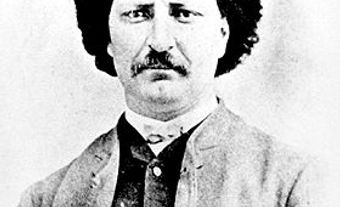On the morning of February 29, 1704, a French and First Nations army fell upon the sleeping frontier village of Deerfield, Massachusetts. The raiders had spent a fireless winter night camped across the Deerfield River, -cold, hungry and tired. Before dawn they sent out scouts, who reported that the village watch had fallen asleep. Lieutenant Jean-Baptiste Hertel de Rouville called the troops and militia together and exhorted them to put aside their quarrels, pray and embrace.
The little army moved slowly on their snowshoes across the deep snow until they reached the palisade. Volunteers climbed a snow bank up the stockade and spilled into the town. Soon there was a torrent of attackers sweeping into the houses. Abenaki, Kanawake Mohawk and Pennacook ransacked the home of Reverend John Williams. They killed the youngest children and seized Williams, his wife and four eldest children. Amid the battle cries, terrified screams and gunshots, some defenders were killed, others fled and others hid, only to die in flames as the attackers torched the houses.
The attack on Deerfield was set in motion by a dynastic war in Europe, which spread into the Connecticut Valley in 1699. Governor Philippe de Rigaud de Vaudreuil was anxious to take the initiative and to consolidate his Native allies. The Canadians who gathered at Chambly in late 1703 came from communities that were hardened by 50 years of struggle with the Five Nations Iroquois.
The most numerous among the 200 or so First Nations warriors were Mohawk from Kahnawake. There were also Huron from Lorette and some 60 to 80 Abenakis. Each First Nations group had its own motivation to take part but always the primary goal was to take captives, which had ancient cultural roots among the First Nations.

|
| Several hundred French soldiers and their Native allies staged a surprise attack on the unprepared community of Deerfield, including residents barricaded in this house (public domain). |
The village of Deerfield was the "utmost" frontier town in Massachusetts, the very end of English settlement. It sat on what the English regarded as empty land but which the Abenaki in particular regarded as their ancestral lands. Towns like Deerfield were vulnerable to attacks as forces could easily ascend Lake Champlain from Canada, cross the Green Mountains and descend the Deerfield River. Deerfield was not a military outpost but a traditional subsistence farming community, whose greatest crop was hordes of children, all of whom were an ongoing threat to the region's First Nations and the far less populous French colony.
The strongest resistance in the town was organized in two large houses. At the Sheldon house in particular the occupants kept up a steady fire and kept the assailants at bay for several hours. Elsewhere the French and Natives rounded up as many prisoners as they could find and set out with their booty just before a relief party of English militia arrived.
The retreat was always the most dangerous time for raiding parties, distracted by prisoners and loaded with plunder. Joined by enraged townsmen the militia ran headlong after the raiding party. But without snowshoes they floundered in the deep snow. De Rouville anticipated the pursuit and laid an ambush 2 kilometres from the village. The English rushed forward and 9 were slain and several, including militiaman John Marsh, were captured.
Those left in the town clambered among the burned out ruins for family and friends. They found 41 dead. Another 9 died in the pursuit, as did 7 from a neighbouring town.
The attackers began the long march back to Canada with 109 captives. As the party moved at a quick pace, a brutal weeding out took place. The survivors struggled on sore frozen feet. Those who fell behind, mainly women and children, were killed. One of these was Eunice, John Williams' wife, who, weak and freezing, could not go on.
The party made its way to frozen Lake Champlain and a month and a half after the attack reached its origin at Fort Chambly. The French managed to ransom some of the captives. John Williams spent only a week in a Mohawk village. Most of the bargaining took place in Montreal, where wealthy merchants tried to free captives, especially the children. Abenaki were the most likely to sell their captives, but for the Mohawks and Hurons captives were the essential reason for these "mourning wars." They could replace losses from battle and disease.
Diplomatic negotiations began soon after the raid and within three years 52 of the captives had returned, 46 by negotiation, 1 by sale and 5 had escaped. About 34 remained in Canada, 2 with the Huron, 3 with the Mohawk and 7-9 at Kahnawake. Among the latter was Williams' daughter Eunice who chose to live the rest of her life among the Mohawk. Her descendants still live in Kahnawake.
How is this violent episode in our early history remembered? Today, a re-enactment takes place each year in the museum-village of Deerfield. The word "massacre" used so freely by historians in the past is seldom used now. There is a greater understanding of the complexity and context of the raid, particularly the role of the First Nations, who were caught in a foreign war and who were in the process of being dispossessed.

 Share on Facebook
Share on Facebook Share on X
Share on X Share by Email
Share by Email Share on Google Classroom
Share on Google Classroom
